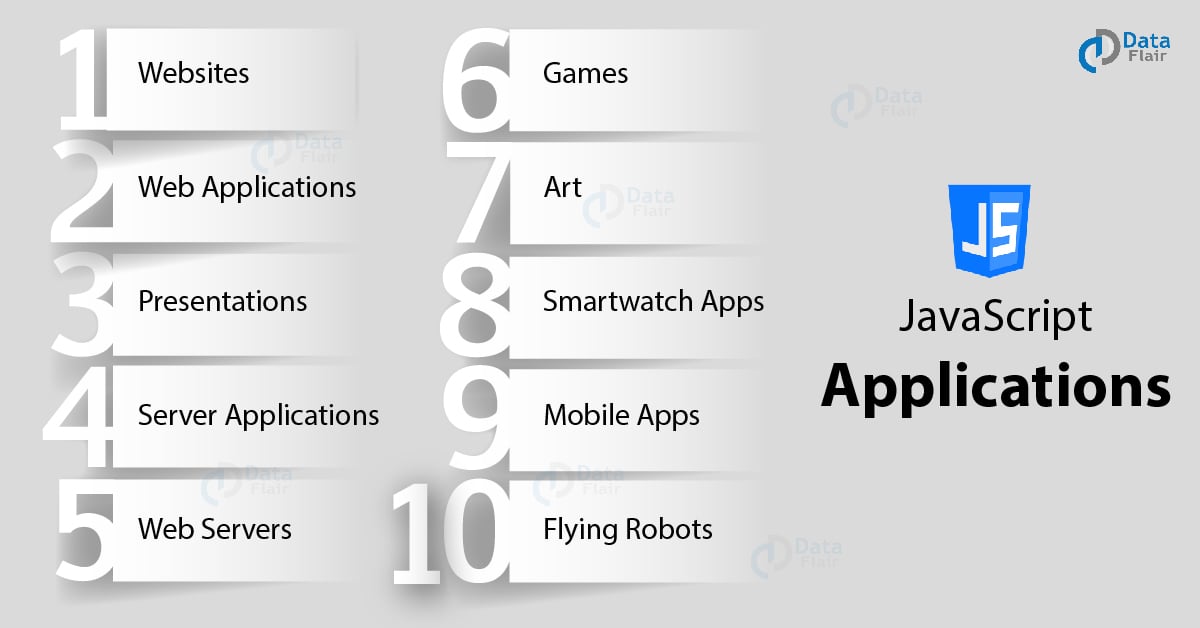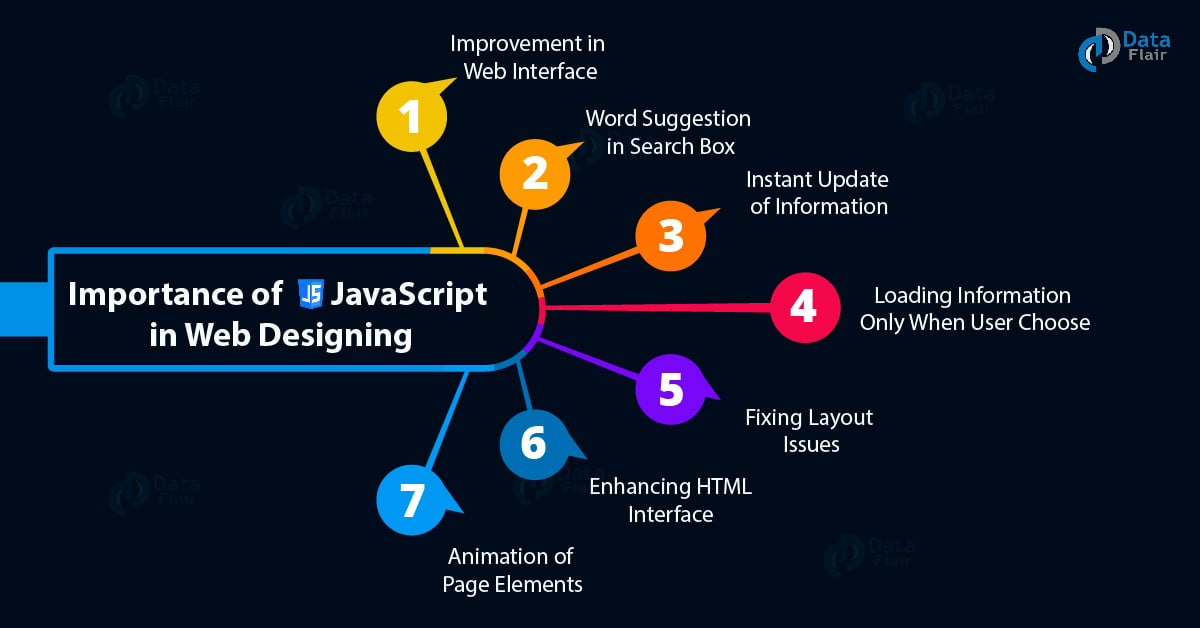JavaScript Applications – JavaScript Uses in Web Designing
Free Web development courses with real-time projects Start Now!!
JavaScript is the widely used programming language, all over the world. It has the largest open-source package repository in the world (npm). Every type of software uses JavaScript, including the server code (Node.js), productivity apps, 3D games, robots, IoT devices. JavaScript has achieved the goal, set by Java a long time ago: write once, run anywhere. There are various JavaScript uses in different segments, let’s discuss them one by one.
Common Uses of JavaScript
JavaScript is mainly used in the following:
1. Websites
JavaScript lets you add behavior to the web page where the page responds to actions without loading a new page to request processing. It enables the website to interact with visitors and execute complex actions.
2. Web Applications
As browsers and personal computers have continued to improve, JavaScript gained the ability to create robust web applications. Consider applications like Google Maps. If you want to explore a map in Google Maps, all you have to do is click and drag with the mouse. You will see the part of the map that is less detailed and then fills itself in. That’s the work of JavaScript behind the scene.
3. Presentations
A very popular use of JavaScript is to create presentations as websites. Using the Reveal.js framework, this becomes really easy if you are familiar with HTML and CSS.
4. Server Applications
With the advent of Node.js a few years ago, JavaScript made its way from the browser into the server. Since then Node is adopted by major companies such as Wal-Mart, as a key part of back end infrastructure.
5. Web Servers
You can create much more robust servers using Node or the standard server application framework Express.js. Many of the previously mentioned Nodes are actually built using MEAN stack (Mongo Express Angular Node) of which Express is the key component.
6. Games
While the browser hasn’t been the traditional games platform in the past, recently it has become robust for games. Additionally, with the addition of HTML5 canvas, the level of complexity that is possible in the browser-based games has increased exponentially. There are even browser games that teach us programming.
7. Art
One of the new features of HTML5 specification is the canvas element, which allows the browser to render three-dimensional spaces. This helps to open the browser as a new source for digital art projects.
8. Smartwatch Apps
Popular smartwatch maker Pebble has created Pebble.js, a small JavaScript framework that allows a developer to create an application for the Pebble watches in JavaScript.
9. Mobile Apps
One of the most powerful things you can do with JavaScript is to build an application for non-web contexts.
That’s the other way of saying that you can make apps for things that are aren’t on the internet.
For example – Mobile devices are now the most popular way to access the internet. What this means is all of the websites should be responsive. The catch is that the mobile app comes in two major applications, Apple and Android. And those applications are written in completely different languages.
10. Flying Robots
Yes, you read that right. Several commercially available quadcopters, some outfitted with a simple OS, make it possible to install Node.js. This means that you can program a flying robot with JavaScript. JavaScript is the most accessible programming language on this planet, having many features. So, it’s good to see that it is creating such a wide range of applications.
Explore the various features of JavaScript.
Importance of JavaScript in Web Designing
There are different web designing and practical uses of JavaScript:
1. Improvement in Web Interface
In these days, what we are doing with JavaScript is we enhance the old, tired and true web interface – clicking links, entering information and sending off, etc – to be more responsive to the end-user.
For example – A sign-up form can check if your name is available when you enter it, preventing you from having to endure a frustrating reload of the page.
2. Word Suggestion in Search Box
A search box can give you suggested results when you type, based on what has been entered so far.
For example – “bi”, could bring up suggestions to choose from that contain the string such as “bird”, “big”, and “bicycle”. This usage pattern is called Autocomplete.
3. Instant Update of Information
Information that changes constantly can load periodically without the need for user interactions.
For example – Sports match results or stock market tickers.
4. Loading Information Only When User Choose
Information that is nice to have and runs the risk of being redundant to some users can be loaded when and if the user chooses to access it.
For example – The navigation menu of a site can contain 6 links but display links to deeper pages on demand when the user activates a menu item.
Don’t forget to check JavaScript Syntax
5. Fixing Layout Issues
It can find the position and area of the element on the particular page and the dimensions of the browser window. By implementing this information you can stop overlapping elements and other similar issues.
For example – You may have a menu with several levels by clicking and checking if there is space for the submenu to appear before showing it, you can prevent scroll bars or overlapping menu items.
6. Enhancing HTML Interface
JavaScript can enhance the interfaces that HTML gives us. While it’s nice to have a text input box, you might want to have a combo box allowing you to choose from a list to preset values or enter your own. You can enhance a normal input box to do that, using JavaScript.
7. Animation of Page Elements
JavaScript helps to animate elements on a page to show and hide information or highlight specific sections of a page and make it more usable and richer user experience.
Summary
In this article, we saw various applications of JavaScript in different segments including web designing. JavaScript has many other uses that help in improving the performance of web pages and user experience. We tried to cover most of the JavaScript uses, still, if you have any query or suggestion, just enter in the comment section, below.
Your 15 seconds will encourage us to work even harder
Please share your happy experience on Google




Good